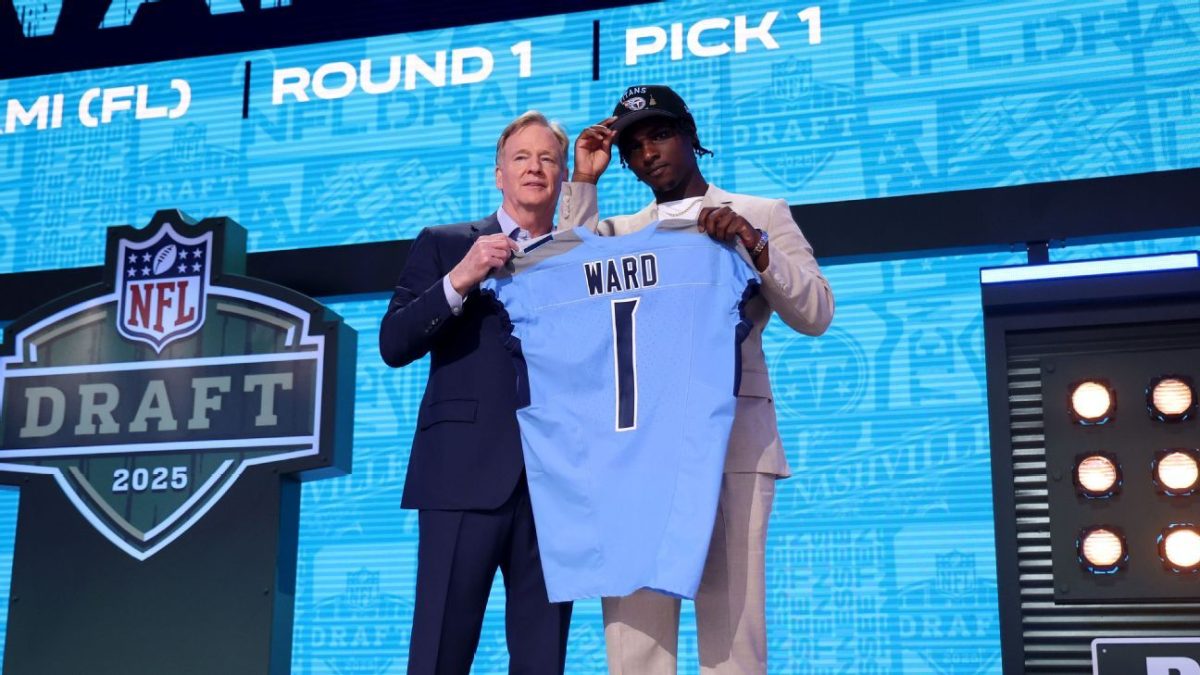The United States is set to host the 2026 World Cup alongside Canada and Mexico, but after the United States hosted a disastrous Copa America (a smaller international tournament) over the past summer, many have begun to question the ability of the United States to be proper hosts for the biggest sporting event in the world.
The issue with a lot of these stadiums comes within the playing surfaces themselves. Mercedes-Benz Stadium in Atlanta and Metlife Stadium in East Rutherford are both turf surfaces, and as Copa America games need to be played on grass, the stadiums switched the surfaces. Still, the fields had lots of uneven patches that were extremely dangerous to play on.
Argentinian goalkeeper Emiliano Martinez called the pitch a “disaster,” and many of his teammates and Canadian opponents agreed.
Uruguay manager Marco Bielsa shared his strong feeling about the fields in a post tournament rant that sent alarm bells ringing across the soccer world.
“What they (CONMEBOL, the organization in charge of Copa America) can’t keep deceiving is that the pitches are perfect, (CONMEBOL) explicitly lie in meetings. The head of the playing fields…meets with us to say that it is a visual issue (and) that [Brazil star] Vinicius Jr. can’t see, that [Argentina coach Lionel] Scaloni doesn’t know what he’s talking about, that the pitches are perfect.”
Atlanta United, which plays home games at Mercedes-Benz Stadium, plays on turf. They played a home game on that turf five days before the opening match between Argentina and Canada. This begs the question, why was the pitch installed so late? Why wouldn’t CONMEBOL install a pitch that protects all players who will play on it? It all boils down to CONMEBOL being too incompetent to properly run a tournament. CONMEBOL is an extremely corrupt organization that has taken bribes and appointed referees who are in no position to control vital games. For example, in a do-or-die game for the United States in the group stage, the referee, Kevin Ortega, was charged with 23 counts of bribery and corruption. In 2022, he was refereeing a game involving Argentine club Boca Juniors in which he awarded the club a sketchy penalty. Bolivian police searched the referee’s locker after the game to find…a Boca Junior jersey in one of his bags. You do the math on that one. CONMEBOL failed to step up time and time again during Copa America and could not earn the respect of the teams who played in the tournament.
As far as the 2026 World Cup goes, there are two ways soccer fans can look at the situation. One viewpoint is that CONMEBOL is not in charge of running the World Cup. The other and more unfortunate viewpoint is that FIFA (governing body of world soccer) is in charge. FIFA is known as one of the most corrupt organizations in the world, something even admitted by Sepp Blatter, the former president of the organization. FIFA has been known to accept bribes, as exemplified by Qatar and Saudi Arabia, who paid billions in order to host the 2022 and 2034 World Cup. That 2022 World Cup displayed FIFA’s blatant disregard for human life, as they employed thousands of migrant workers and forced them to build the eight stadiums used to host matches. The Guardian estimated that over 6,000 workers died during the years leading up to the World Cup, the majority of the deaths due to extreme heat and brutal labor. While the U.S. will not need to to build infrastructure, fans should still be wary of FIFA’s corruption as they, too, have examples of refereeing corruption. In 2010, referees in the World Cup were exposed for accepting bribes, highlighting glaring flaws that are arguably the most important in soccer fairness.
The last potential issue of a United States World Cup is stadium safety. During the Copa America final played between Argentina and Colombia, fans, many of whom did not have tickets, stormed the stadium to watch the game. Police and stadium security were completely unprepared for this scenario: fans were climbing through air vents their way into Hard Rock Stadium and causing chaos. The game was delayed by over two hours as fans broke down barriers around the stadium, prompting fights as fans who had paid thousands of dollars for their tickets were unable to get into the stadium. It has left many questioning the ability of United States venues to properly control their crowds, as the United States typically does not see fans without tickets showing up to its venue for matches. It highlights both the potential risks of spending absurd amounts of money on tickets and the overall safety of fans themselves. Can the U.S. fix this situation within the next two years? One can only hope.
With an expanded field of 48 teams, this tournament is set to be the biggest cup in world history. The United States has got a lot of ground to cover in order to live up to fan’s high expectations.








